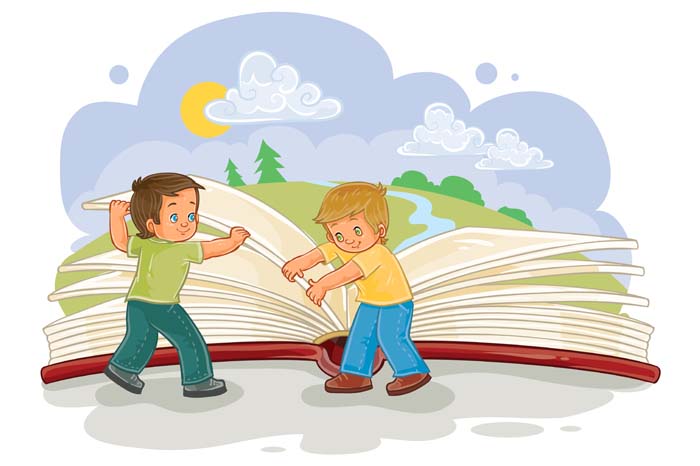The mere act of passing from the safety of your hands to those of another, can make your toddler believe they are in a Mess.
An ‘inglorious’ one, at that!
Starting to get a bit ‘anxious’ yourself? Don’t worry, we have all your little ones covered here, with some Calming Techniques for Preschoolers. Techniques that will help keep that Baby Stranger Anxiety well at bay.
Just when you might think that Stranger Anxiety and Separation Anxiety are the same, here’s a closer look at Stranger Anxiety, to help settle the debate.
Stranger Anxiety: What it is and how it differs from Separation Anxiety
Simply put, Stranger Anxiety refers to the distress little children face, when they find themselves in the care of a stranger.
‘So, should I be worried?’
That’s a common question most parents find themselves ask, when they find their child in the midst of a bout of Baby Stranger Anxiety.
You can rest assured, this phenomenon is completely natural. It starts when your baby is around 6 months old, and reaches its peak at no later than 15 months.
It’s really nothing short of babies finding themselves out of their ‘comfort zones’, for the very first time. Of course, they will have a natural instinct to seek the ‘familiar’. What they must learn, however, is that there comes a time when they must break that proverbial ‘umbilical cord’, and learn to feel secure with new people, too.
Stranger Anxiety vs Separation Anxiety: How they Differ
It must be noted, that while they appear pretty much the same, there’s a distinct difference between Stranger Anxiety and its ‘familiar’ counterpart, Separation Anxiety.
In Stranger Anxiety, the distress experienced by a child is, as we have just seen, owing to their finding themselves with someone ‘unfamiliar.’ Conversely, all that bawling they indulge in when they are merely ‘separated’ from their caregivers or parents, is what we know to be Separation Anxiety.
Note: To give a clearer picture of the difference, Separation Anxiety occurs even when your child is left in the care of their Grandmother or Uncle. Being left with someone ‘familiar’, does not help to calm them.
Talking about ‘Calming’, the next section is an attempt to explore just how one can ‘calm’ children, when they find themselves in the throes of Stranger Anxiety.
Strategies for Banishing the Fear of Strangers: Calming Techniques for Preschoolers (h3)
Luckily, there are ways in which you can help your child overcome that Stranger Anxiety, that causes them undue distress. An unwanted phenomenon, that is a matter of great distress for most parents, too!
Here are some strategies that might work perfectly well, in banishing that Stranger Anxiety.
A taste of what’s to come
Hinting at what is around the corner, might work wonderfully!
To do: Try and say something to the tune of the following:
- My friend’s child has eyes the same colour as yours.
- If you behave well with the doctor, you will get ice cream!
Exposing them early on to people
Of course, not too early! Once your paediatrician gives you the go-ahead, take them out! The mere act of walking with them in the park can help expose them to plenty of strangers, without them having to interact with them at all.
Tip: Encourage them to smile at strangers, and make eye contact. That will naturally ease their fear of ‘Strangers.’
Be an Oasis of Calm
Children can sense when there’s trouble brewing around the corner. If you are not calm in their eyes, they might just have worrisome thoughts about the person you are entrusting them to!
To do: Be calm and speak softly, around new people. It will help if you tell the ‘strangers’ to do the same. You want them to limit eye contact and move slowly towards your child, instead of rushing at them.
Plan Advance Stranger Visits
Perhaps you’re planning on leaving a child with someone in advance? Why not ease them into the process of handing them over to the stranger?
To do: You want to give your child some ‘Warm Up’ time, with the stranger who will be taking care of them soon. To do that, invite the stranger over for a visit or two, so your little one can garner a sense of familiarity around them.
Recognize and Embrace Stranger Anxiety
It won’t help if you don’t show your child you love them, when they find themselves having to deal with that terrible Stranger Anxiety.
To do: Watch out for the familiar signs of Stranger Anxiety, like Crying and appearing to be Withdrawn. Recognising that they might indeed have a problem, be gentle and loving with them. The last thing you want is for that Stranger Anxiety Issue to blow up into something larger, like Depression or Anxiety.
Forging a Positive Association
Children have an inherent sense of what is ‘good’ and ‘bad’. Ensure that you use this to your advantage.
To do: It will help if you can tell your child some ‘good’ things about the stranger they are going to meet, in advance. Like, ‘Your cousin is a very funny boy!’
Give Them Time
Last but not the least, you want to give your child enough time to overcome their fear of strangers.
To do: You don’t want to push too hard, when it comes to introducing your Preschooler to new people. Go slow, and in time that ‘Stranger Anxiety’ will be a thing of the past.
At EuroKids, we believe that it is natural for young children to be afraid of strangers. That being said, dealing with Stranger Anxiety provides them with an invaluable opportunity to trust their instincts, and gain a better understanding of the people around them.














